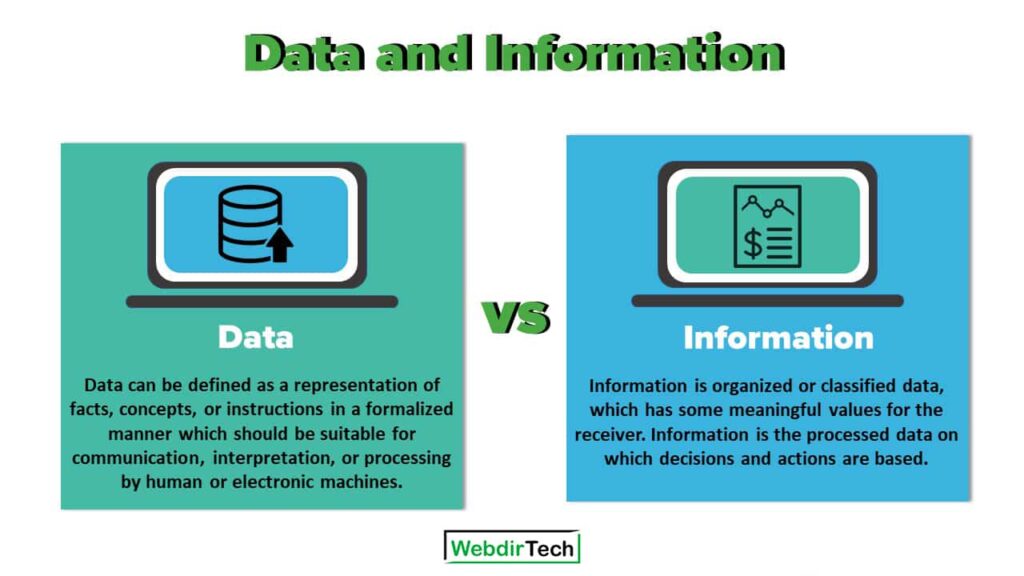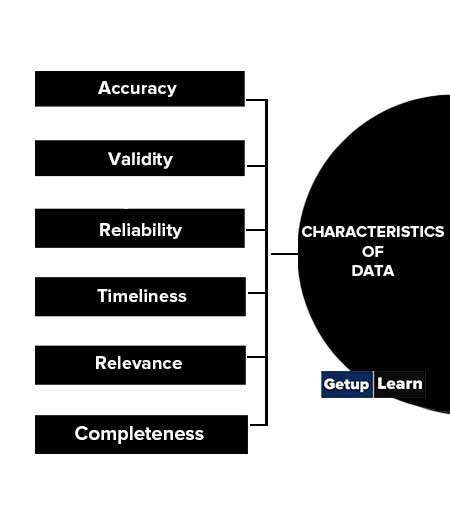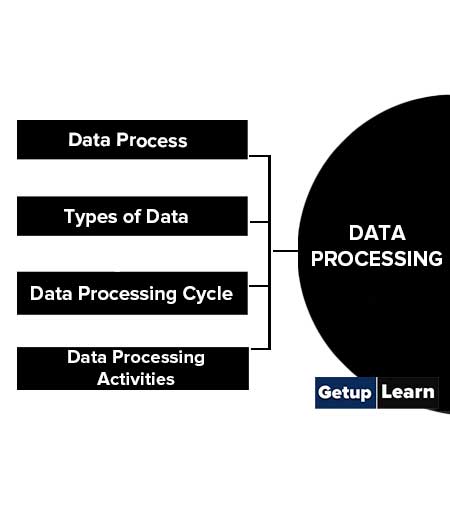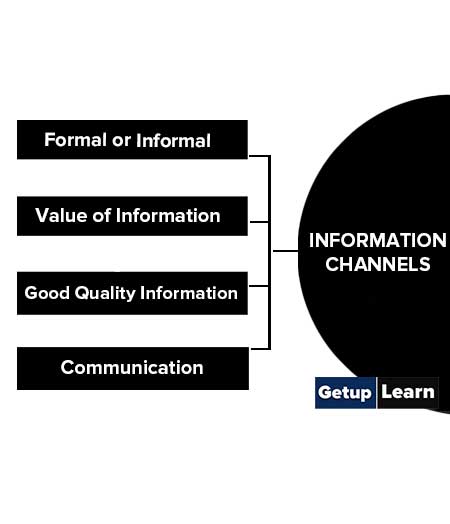What is Data and Information?
Data: The raw material of organizational life; consists of disconnected numbers, words, symbols, and syllables relating to the events and processes of the business.
Information: For data to become information, it must be contextualized, categorized, calculated, and condensed. The information thus paints a bigger picture; it is data with relevance and purpose. It may convey a trend in the environment, or perhaps indicate a pattern of sales for a given period of time.

Essentially information is found “in answers to questions that begin with such words as who, what, where, when, and how many”.
Definition of Data
Data can be defined as a representation of facts, concepts, or instructions in a formalized manner, which should be suitable for communication, interpretation, or processing by human or electronic machines.
Definition of Information
Information is organized or classified data, which has some meaningful values for the receiver. Information is the processed data on which decisions and actions are based.
Characteristics of Data
The following are six key characteristics of data which discussed below:
- Accuracy
- Validity
- Reliability
- Timeliness
- Relevance
- Completeness

Accuracy
Data should be sufficiently accurate for the intended use and should be captured only once, although it may have multiple uses. Data should be captured at the point of activity.
Validity
Data should be recorded and used in compliance with relevant requirements, including the correct application of any rules or definitions. This will ensure consistency between periods and with similar organizations, measuring what is intended to be measured.
Reliability
Data should reflect stable and consistent data collection processes across collection points and over time. Progress toward performance targets should reflect real changes rather than variations in data collection approaches or methods. Source data is clearly identified and readily available from manual, automated, or other systems and records.
Timeliness
Data should be captured as quickly as possible after the event or activity and must be available for the intended use within a reasonable time period. Data must be available quickly and frequently enough to support information needs and to influence service or management decisions.
Relevance
Data captured should be relevant to the purposes for which it is to be used. This will require a periodic review of requirements to reflect changing needs.
Completeness
Data requirements should be clearly specified based on the information needs of the organization and data collection processes matched to these requirements.
Data Processing
Here we look at an overview of data processing:
- Data Process
- Types of Data
- Data Processing Cycle
- Data Processing Activities

Data Process
Data processing is the computer process that converts data into information. The processing is usually assumed to be automated and running on a mainframe, minicomputer, microcomputer, or personal computer.
Data processing systems typically manipulate raw data into information, and likewise, information systems typically take raw data as input to produce information as output.
In the context of data processing, data are defined as numbers or characters that represent measurements from the real world.
Types of Data
Five types of data are stored and processed by computers. They are:
- Text which consists of strings of characters.
- Numbers.
- Audio, namely speech, and music.
- Pictures – monochrome and color.
- Video which is sequence of pictures such as movies or animation. Usually, video data has an accompanying soundtrack which is synchronized with the pictures.
Data Processing Cycle
Data processing is the re-structuring or re-ordering of data to increase their usefulness & add values for particular purpose. The data processing activities described above are common to all data processing systems from manual to electronic systems.
Data Processing cycle activities can be grouped into four functional categories:
- Data Input
- Data Processing
- Data Output
- Storage
- Constituting
what is known as a data processing cycle?
Data Processing Activities
Data processing consists of those activities which are necessary to transform data into information. Man has in course of time devised certain tools to help him in processing data. These include;
- Manual tools: such as pencil and paper.
- Mechanical tools: such as filing cabinets.
- Electromechanical tools: such as adding machines and typewriters.
- Electronic tools: such as Calculators and computers.
Many people immediately associate data processing with computers. As stated above, a computer is not the only tool used for data processing; it can be done without computers also. However, computers have outperformed people for certain tasks.
What is information?
Information can be defined as “data that has been transformed into a meaningful and useful form for specific purposes”. Information is data that has been processed to make it meaningful and useful.
Information is the meaning that a human assigns to data by means of the known conventions used in its representation. (Holmes, 2001). Information is produced through processing, manipulating, and organizing data to answer questions, adding to the knowledge of the receiver.
Information can be about facts, things, concepts, or anything relevant to the topic concerned. It may provide answers to questions like who, which, when, why, what, and how.
If we put Information into an equation it would look like this:
Data + Meaning = Information
There is no hard and fast rule for determining when data becomes information. A set of letters and numbers may be meaningful to one person, but may have no meaning to another. Information is identified and defined by its users.
Example:
Looking at the examples given for data:
- 3, 6, 9, 12
- cat, dog, gerbil, rabbit, cockatoo
Only when we assign a context or meaning does the data become information. It all becomes meaningful when we are told:
- 3, 6, 9 and 12 are the first four answers in the 3 x table
- cat, dog, gerbil, rabbit, cockatoo is a list of household pets
Information Channels
These are information channels which are below:
- Formal or Informal
- Value of Information
- Good Quality Information
- Communication

Formal or Informal
Formal channels are the official (or reliable!) ones, such as memos, letters, the company noticeboard, etc.
Informal channels are the unofficial ones, such as office gossip, informal meetings, and rumours – these can often be unreliable.
Value of Information
It is often said that we are in the information age, and that information is a valuable commodity.
Why is information valuable? Because:
- It allows us to plan how to run our business more effectively – e.g. shops can stock what customers want, when they want it, and manufacturers can anticipate demand.
- Marketing materials can be targeted at people and customers that you know could be interested in your products and services.
- This can lead to increased customer satisfaction and therefore profit.
Good Quality Information
The characteristics of good quality information, it should be:
- Accurate
- Up-to-date
- Relevant
- Complete
- On-time
- Appropriately presented
- Intelligible
Communication
Communication is the process by which a message or information is exchanged from a sender to a receiver. For example, a production manager (sender) may send a message to a sales manager (receiver) asking for sales forecasts for the next 6 months so they can plan production levels. The sales manager would then reply (feedback) to the production manager with the appropriate figures.
- Communication is the sharing of information.
- Communication is the giving and receiving of messages.
- Communication is the transfer of information from one or more people to one or more other people.
The first of these three definitions is the simplest, and also the broadest. Because of those qualities, it is also a little nonspecific. The second definition reminds us that information, here called a message, must be received, as well as sent, to complete the process.
The goal of communication is to convey information and the understanding of that information—from one person or group to another person or group.
This communication process is divided into three basic components:
A sender transmits a message through a channel to the receiver.
The sender first develops an idea, which is composed into a message and then transmitted to the other party, who interprets the message and receives meaning.
FAQ About Data and Information
What is difference between data and information?
Data: The raw material of organizational life; it consists of disconnected numbers, words, symbols, and syllables relating to the events and processes of the business. Information: For data to become information, it must be contextualized, categorized, calculated, and condensed. The information thus paints a bigger picture; it is data with relevance and purpose. It may convey a trend in the environment, or perhaps indicate a pattern of sales for a given period of time.
What is the simple definition of data?
Data can be defined as a representation of facts, concepts, or instructions in a formalized manner, which should be suitable for communication, interpretation, or processing by human or electronic machines.
How do you describe information?
Information is organized or classified data, which has some meaningful values for the receiver. Information is the processed data on which decisions and actions are based.
What are the six characteristics of data?
The following are six key characteristics of data: 1.Accuracy, 2.Validity, 3.Reliability, 4.Timeliness, 5.Relevance, 6.Completeness.
What are the 5 stages of data processing cycle?
Data Processing cycle activities can be grouped into four functional categories: 1.Data Input, 2.Data Processing, 3.Data Output, 4.Storage, 5.Constituting.
